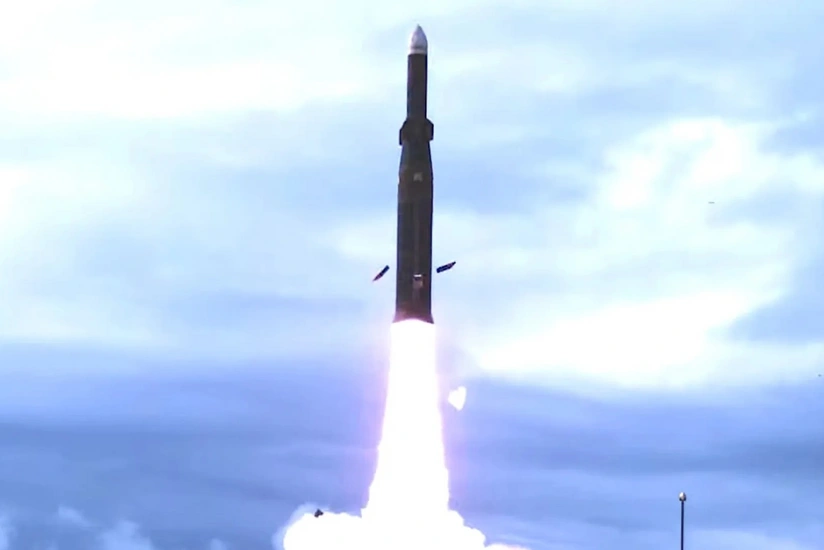Taiwan tests system capable of intercepting ballistic missiles
- 23 November, 2025
- 16:35

Recent missile tests by the Chungshan Institute of Science and Technology (CSIST) show that Taiwan's missiles are capable of intercepting ballistic missiles as they re-enter the atmosphere and pose a significant deterrent to Chinese missile threats, former Hsiung Feng III missile development project chief engineer Chang Cheng said yesterday, Report informs via Taipei Times.
The military-affiliated institute has been conducting missile tests, believed to be related to Project Chiang Kung at Pingtung County's Jiupeng Military Base, with many tests deviating from past practices of setting restriction zones at "unlimited" and instead clearly stating a 30.48km range, Chang said.
"Unlimited" restrictions zones for missile tests is not stating that missiles can be launched into the air at an infinite altitude, but more as a way of warning that all planes should not enter the zone, as the extended-range version of the Tien Kung III (Sky Bow) missile has a maximum altitude of 70km, which is far higher than any aircraft can go.
Designating missile restriction zones as "unlimited" can help provide cover regarding a missile's true capabilities, and also leaves a margin for error, as the system has not yet matured, Chang added.
Reaching an apogee of 30.48km is a true challenge engineering-wise, as the atmospheric density at that height is only 1 percent of sea-level atmospheric density, altering the application of the laws of aerodynamics on which traditional missiles rely when trying to turn, he said.
To intercept missiles at this altitude, a missile must rely on divert and attitude control systems or thrust vector control systems to alter its direction, he said.
Chang said that 30km was a critical altitude for intercepting ballistic missiles as they re-enter the atmosphere, and that the CSIST is essentially telling the world that we have a limited high-altitude denial capability.
Such achievements mean the CSIST is capable of designing missiles that can withstand the heat of atmospheric re-entry and operate in a near-vacuum environment, Chang said.
The CSIST's missile might be a viable endo-atmospheric interceptor that provides Taiwan with limited high-altitude area-denial capability, he said.
Project Chiang Kung is developing two missiles (versions I and II), based on the extended-altitude TK-III missile.
The Chiang Kung I is expected to have an interception altitude higher than that of the US-produced Patriot III system, a military source said during the Taipei Aerospace and Defense Technology Exhibition in September.
The Chiang Kung II is expected to have two derivatives, they said.
The Chiang Kung IIA is rumored to have an interception altitude of 100km, on par with the US Terminal High Altitude Area Defense system, while the Chiang Kung IIB would be a new surface-to-surface ballistic missile with an estimated range of 1,000km, they said.